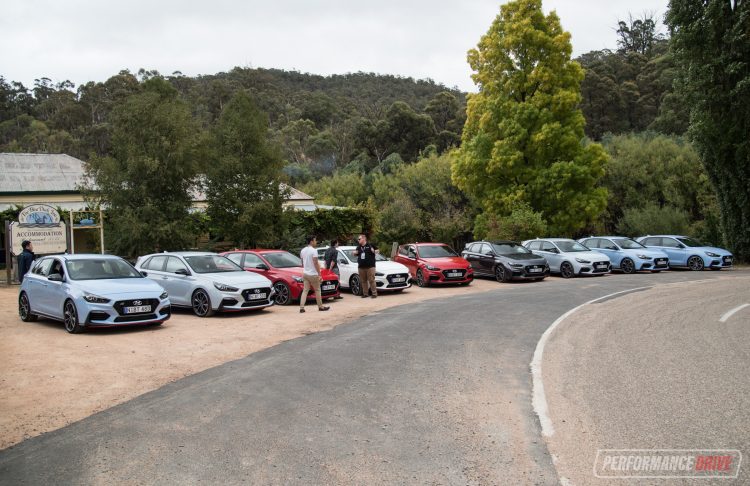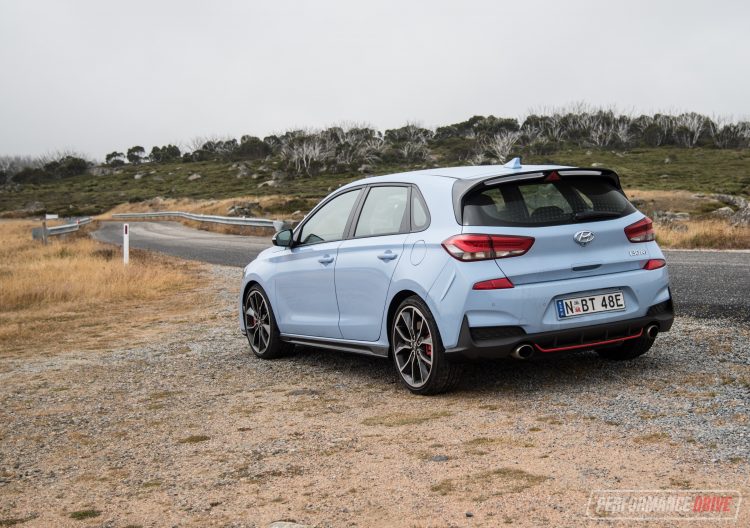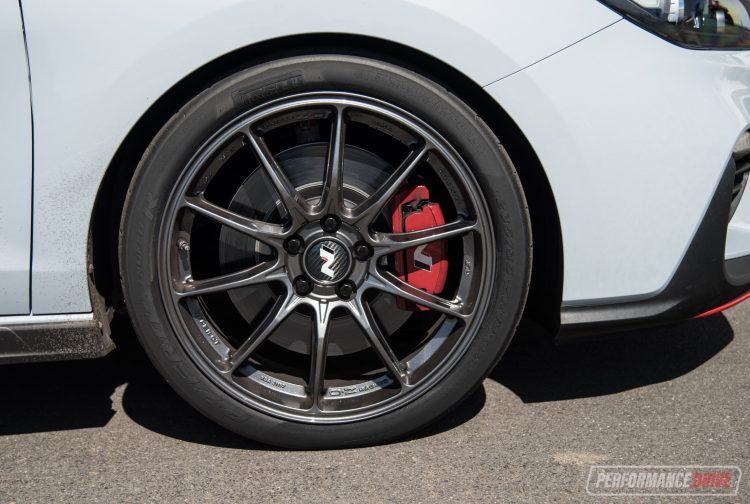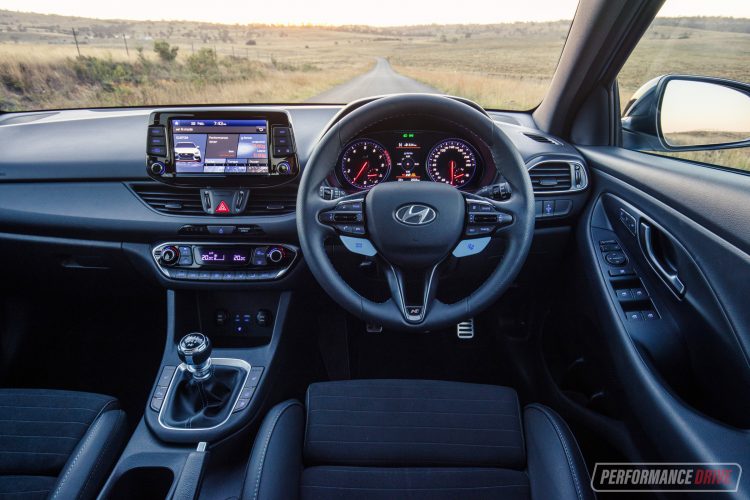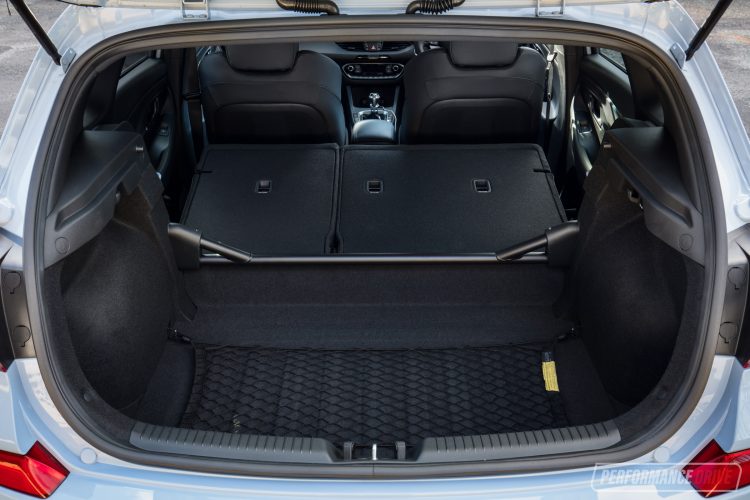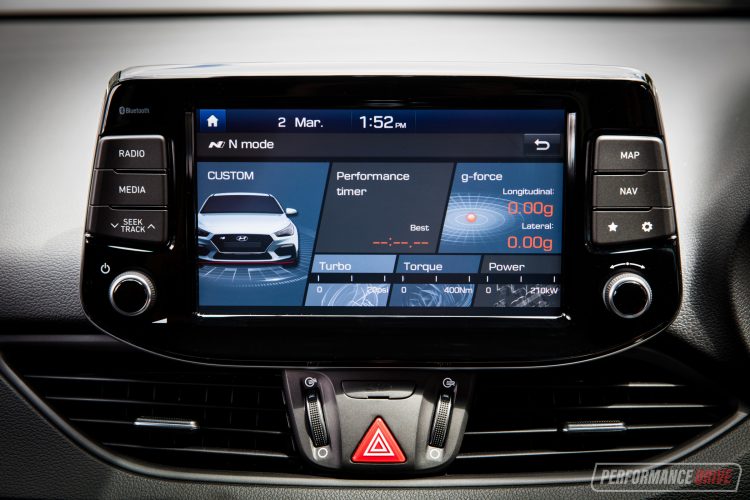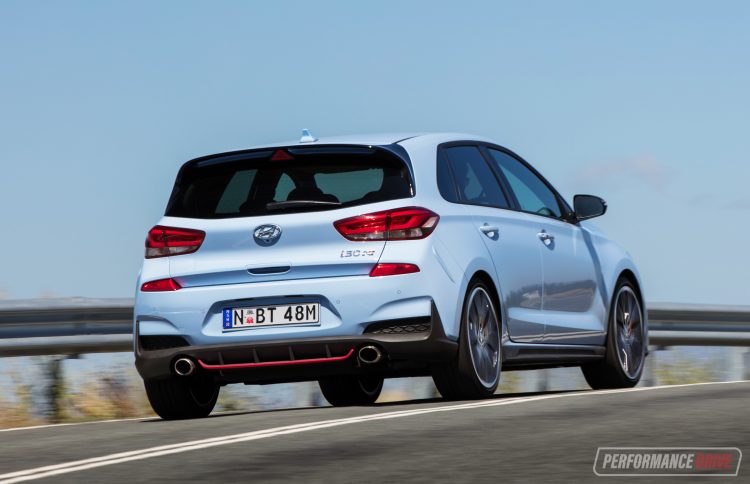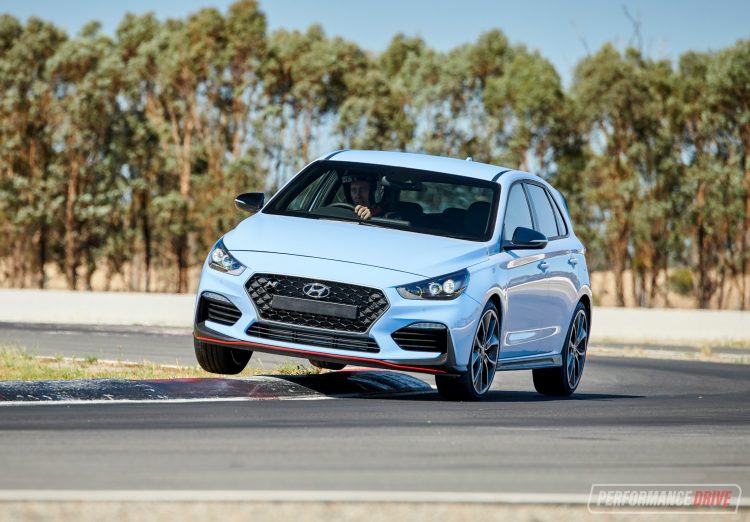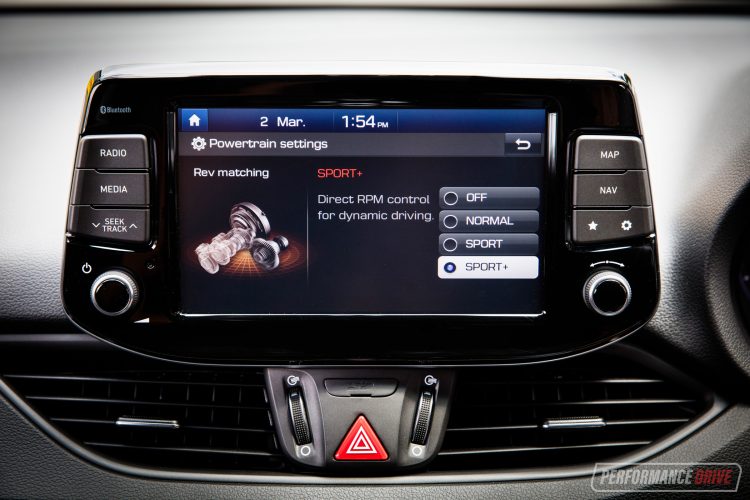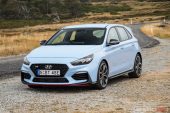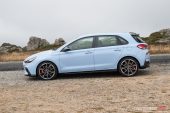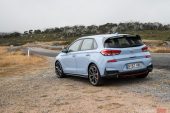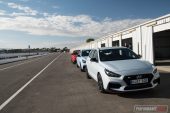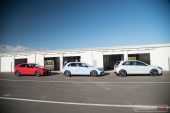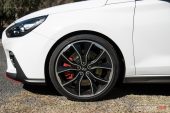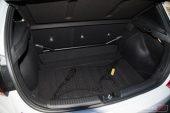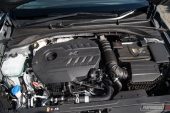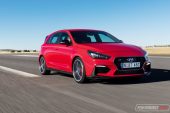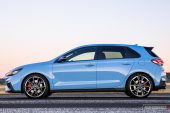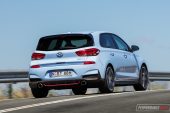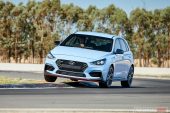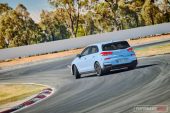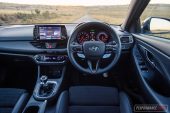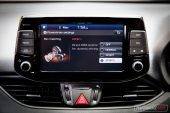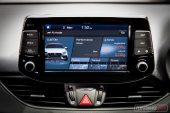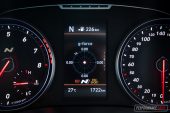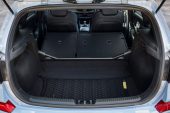To come from nowhere and burst into a field of very senior and very experienced competitors is daunting. To actually better them would be a miracle. Can the new Hyundai i30 N take on the established rivals? And does it have a chance at taking them down? We’re here at the official Australian launch to find out.
Some quick background; the i30 N is Hyundai’s first proper attempt at a hot hatch. It’s also the company’s first sports car developed by its new sub-brand called N Performance. Chief of the division is former BMW M boss Albert Biermann – the N name probably has some spiritual connection there. Development hubs are set up in Namyang, Korea, as well as at the Nurburgring in Germany, hence the letter ‘N’.
The hot i30 steps into the market at the $40k sweet spot, starting from $39,990. For that sort of money you can get yourself a Subaru WRX, a Toyota 86, or the smaller Renault Clio R.S. and Peugeot 208 GTi, give or take a couple of grand. We all know the main target here though, and it starts with a V and also has a W in it, as well as the letters G, T and I.
Despite trumping the Vee-Dub Golf GTI for outright power – the i30’s 202kW capsizing the GTI’s 169kW – Hyundai says it has not developed the i30 N to be the quickest and most serious hot hatch on the market. Instead, it wants it to be one of the most fun to drive. So let’s dive in and take a look.
2018 Hyundai i30 N – THE SPECS
[column width=”47%” padding=”6%”]Engine: 2.0-litre turbo four-cylinder
Output: 202kW@6000rpm / 353Nm@1450-4700rpm (378Nm on overboost)
Transmission: Six-speed manual
Drive type: Front-wheel drive, LSD
Wheels: F & R: 19×8.0, 235/35
ANCAP: Regular i30 five stars (N model unrated)
Tare weight: 1478kg
Power-to-weight: 7.31:1 (kg:kW)
Official fuel economy: 8.0L/100km
Fuel capacity/Type: 50L/95 RON
Priced from: $39,990[/column][end_columns]
* Figures as tested by PerformanceDrive on the day. Factory claims may be different
2018 Hyundai i30 N – THE PACKAGE
In Australia the i30 N is offered with two option packs, including a $3000 Luxury Pack and a $5000 Luxury Pack with a panoramic roof. As standard though all performance levels are turned up to 11. Overseas markets are offered a slightly watered down model that produces 184kW instead of the full-whack 202kW. Hyundai Australia says it may consider bringing this lower version over if there is demand.
Speaking of the engine, we should probably give it a more formal introduction. It’s a 2.0-litre four-cylinder unit running a ‘square’ combustion with 86mm bore and stroke, and a compression ratio of 9.5:1, pressurised by a twin-scroll turbo running up to 22psi. It barks out 202kW at 6000rpm, and up to 353Nm from just 1450rpm. There is an overboost function that provides 378Nm for up to 18 seconds at a time, only at full throttle. These figures make it the most powerful vehicle in this price range and vehicle category.
Bolted up next to the engine is a six-speed manual transmission with an electronically controlled mechanical limited-slip differential. It’s not just a run-of-the-mill transmission. Like most components involved in the package it’s a bespoke unit tuned by N, with carbon fibre synchromesh rings. Drivers will also notice the N-branded gear shifter ball.
From there power is sent to a set of 19-inch alloy wheels that wear 235/35 Pirelli P-Zero tyres. Soon, Hyundai Australia will be offering a set of lightweight 19-inch alloy wheels developed by OZ Racing (pictured above). The optional wheels help to shave around 6kg per corner. Hyundai says there will be a number of other tasty accessories available through dealerships in the near future as well.
Inside it’s pretty much a regular, albeit sporty, i30. And this is a good thing as the standard model is a comfortable, modern and pleasant place to be. The two front passengers are hugged by bespoke sports seats with big (and soft) bolstering in the sides, wrapped in cloth, or leather in the case of the option pack. There’s also a set of alloy pedals and that gear knob. But other than that it is pretty subtle.
We love the seats. The driver can easily adjust into a natural and settled driving position for that intimate connection with the car, and there’s plenty of headroom and legroom. Console storage and general breathing space is spot on for a hot hatch, as a big part of the buying criteria for this category of vehicle is practicality.
Boot space of 381L is hampered a little bit due to a strut tower brace that runs across the back. It’s not really in the way for your shopping but if you need to lay the rear seats flat to utilise the full 1287L, you will need to lift objects up and over the brace. Again though, the regular i30 boot is sizeable compared with rivals and most of that is still very much available here.
All of the usual mod-cons are present, including a 7.0-inch touch-screen media interface with Apple CarPlay and Android Auto connectivity, sat-nav, a rear-view camera, and USB and Bluetooth compatibility. There’s also dual-zone climate control, cruise control, and a 4.2-inch TFT instrument cluster display.
2018 Hyundai i30 N – THE DRIVE
Okay, so the drive is going to be very important. Fortunately, we had the opportunity to test the car in the mountains around Falls Creek in Victoria and at Winton Raceway to see how it shaped up. In short, many journos ended up feeling ill after countless corners in the mountains. In other words, we don’t think we could have put it to a tougher test.
On the road the i30 N is a very exciting vehicle. Even in normal, slow-driving conditions. It’s great to hear the engine giving off a proper crackling fart and pop like a hot hatch should. There is an artificial sound enhancer in the cabin but you don’t have to worry, the noise from the exhaust far overwhelms it.
There is a nice feeling to be had surging up between gears and enjoying the wave of torque from very low revs. If you’re hesitant about buying a hot hatch because you think there’s not enough torque, don’t be. The i30 N produces almost as much torque as the last Ford Falcon 4.0-litre inline six (391Nm). And remember this is much lighter.
In the mountains the N-developed suspension is sublime. Hyundai Australia had a major influence on the local specification. In fact, our suspension tune is exclusive for this market, with everyone else around the world adopting a universal setup. What’s the difference? Our tune is more comfortable. Engineers say there is a touch more body roll but that’s about the only sacrifice. We think this is a good thing as it makes the car feel playful and ‘chuckable’. It doesn’t mean it’ll lean over like a fat kid scoping out the cake display at a bakery. It just means there is more give in the compression, resulting in a smidge of lean and a dash of added comfort.
The suspension comprises of MacPherson strut front and multi-link rear, with electronic adaptive dampers at each corner. Hyundai engineers went through countless setups to find the right tune for Australian conditions. And they obviously struck gold, because it feels compliant and stable, yet planted and controlled, even over shoddy bitumen. Torsional stiffness is up by around seven per cent compared with the regular i30 body thanks to some under-body braces and unique aluminium suspension arms and mountings.
Around corners, the steering feel isn’t quite at sports car levels in our opinion. Like the regular i30, it does feel a bit numb. It’s an electric-assisted system but for the i30 N it does use a rack-mounted motor instead of a column-mounted motor, which is meant to create a more direct and natural feel. It’s fine. You can feel if there is any understeer or oversteer, and there’s no kickback or major torque-steer to report. But it does lack the purity of say, the last Renault Megane R.S. or Toyota 86.
Out on Winton Raceway the car is right at home. Well, as at home as it is in the mountains and in the urban jungle. You can really grab it by the scruff of the neck and aggressively force it around the track, and it’ll oblige. Or, you can be more delicate and work with it and it will also play along. Going for the former driving style will induce some understeer, obviously, but the limited-slip differential does extremely well to try and eradicate your wrongdoing. For example, there are two very tight corners at Winton. Basically, a tight S-bend. Around here it’s easy to lift-off and create a bit of oversteer, setting the nose up for the next corner. From there you can apply full power and it won’t push too wide or let power waste away through single wheel spinning. Without a limit-slip diff this simply would not be possible, especially with this much power.
Up and down through the gears is made easy thanks to a superb rev-matching system. Yes, we were thinking the same; ‘as if you’d use automated rev-matching. You need to heel-and-toe like a man’… Something along those lines. Well, you can still do that. Pedal placement is ideal, and there’s a simple off button if you don’t like it. However, we’d suggest you at least try it. Hyundai spent considerable time tuning the rev-matching system to make sure it’s actually effective.
It’s adaptive too, constantly adjusting how much revs are needed and how aggressive to blip the throttle. You can see (and hear) this in action in our lap video below. On the last corner we were stepping back to second gear, which, on the second lap with the Trofeo R tyres, was too low a gear for the corner (first time at this circuit, give us a break). This made the rev-matching system blip the revs right up to redline to allow for the smoothest possible shift down into a high-revving second gear. We haven’t experienced a better or more in-tune rev-matching system. It’s not just a quick-fix rev blip, like in the 370Z. It actually monitors your speed and driving behaviour and thinks about what is best for each occasion.
You see, this is the kind of attention to detail we love. This car, clearly, wasn’t designed by accountants to try and turn a profit. Obviously they played a part, but it feels like the primary focus in the development process was to create a car for drivers. And Hyundai, with the handy work of mister former BMW M man, is very confident in the car and its capability. The company even provides full warranty cover for track driving. As far as we know (and we did research into this a little bit) this is the only mainstream production car that offers such coverage. It applies to all of Hyundai’s range too, if you’re ever considering getting the family Santa Fe diesel out to lay down some diesel fumes at the next track day. For us, it means there is high confidence in the components.
We all pretty much flogged the shit out of these cars on the track, all day, and nothing changed. The engine behaviour and performance, the gear shift action and engagement, and the brakes, all held up very well. It was a pretty hot day too, at around 29 degrees. The most impressive element in terms of longevity were the brakes in our opinion. They held up extremely well. Hyundai may have saved money by skipping on the fashionable yet not-always-superior Brembo brakes, but this must have given engineers more freedom and time to tune the brakes more precisely to this car, as they are brilliant. There are some special brake ducts within the front bumper bar to help keep them cool, which obviously helps. On the sticky track we recorded a best 100-0km/h stop in just 35 metres. This is the sort of measurement we usually only see on much more expensive European sports cars.
Overall, the i30 N is a thoroughly enjoyable, capable, and approachable car. To be honest, we were skeptical about the i30 N. Coming into the launch, we almost prepared ourselves to be underwhelmed, having experienced the over-hyped and somewhat mediocre Kia Stinger GT. But we are genuinely blown away by the i30 N. It’s a real driver’s car and a real hot hatch with all of the important bits for making it fast, and all of the creature comforts to make it liveable and practical for the everyday errands. Take one for a test drive and see for yourself.
Oh, if you’re wondering, the best lap time we could do with the standard tyres was 1:42.7 at Winton, and 1:40.4 with the Trofeo R track tyres. We also timed 0-100km/h in 6.43 seconds, and 6.58 with the factory launch control. The quarter mile came up in a best of 14.49 seconds, and 14.63 with launch control. We will test this again in our usual road test soon. As a guide, Hyundai claims 0-100km/h can be done in 6.1 seconds.
2018 Hyundai i30 N – THE VIDEOS
2018 Hyundai i30 N – THE VERDICT
This is a cracking hot hatch, and not just one from a young carmaker with little experience in performance cars. It feels like a proper, well-built, awesome-sounding, and excitingly fast hot hatch. And the fact that’s it’s based on what is one of the best small cars currently on offer in terms of practicality and packaging, only makes it more appealing to a wider audience.
Is it a game-changer? Well, with 202kW on tap it easily trumps the VW Golf GTI class benchmark in terms of power. We’d be betting the i30 N would last a lot longer than anything from the troubled German brand, too. As for the price? As long as it stays under the $40k mark we think it is worth it, taking into account the almost zero cache you get with going for a traditionally cheap brand. When the new eight-speed dual-clutch auto comes next year we’re sure the N badge will become a very familiar sight on our roads.
As always, if you’re thinking about buying a new car don’t forget to click here to speak with our car buying specialists.
